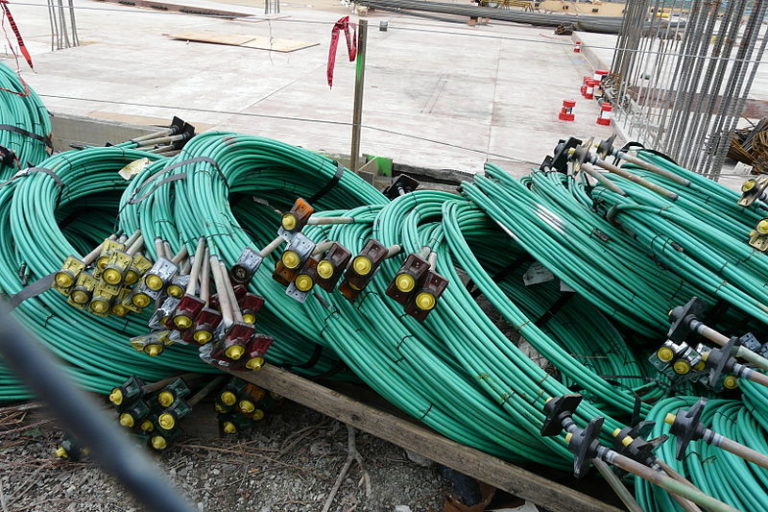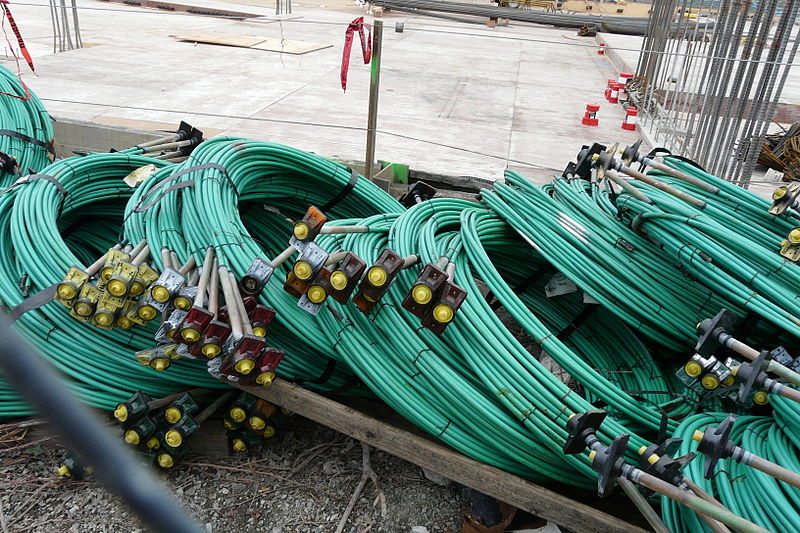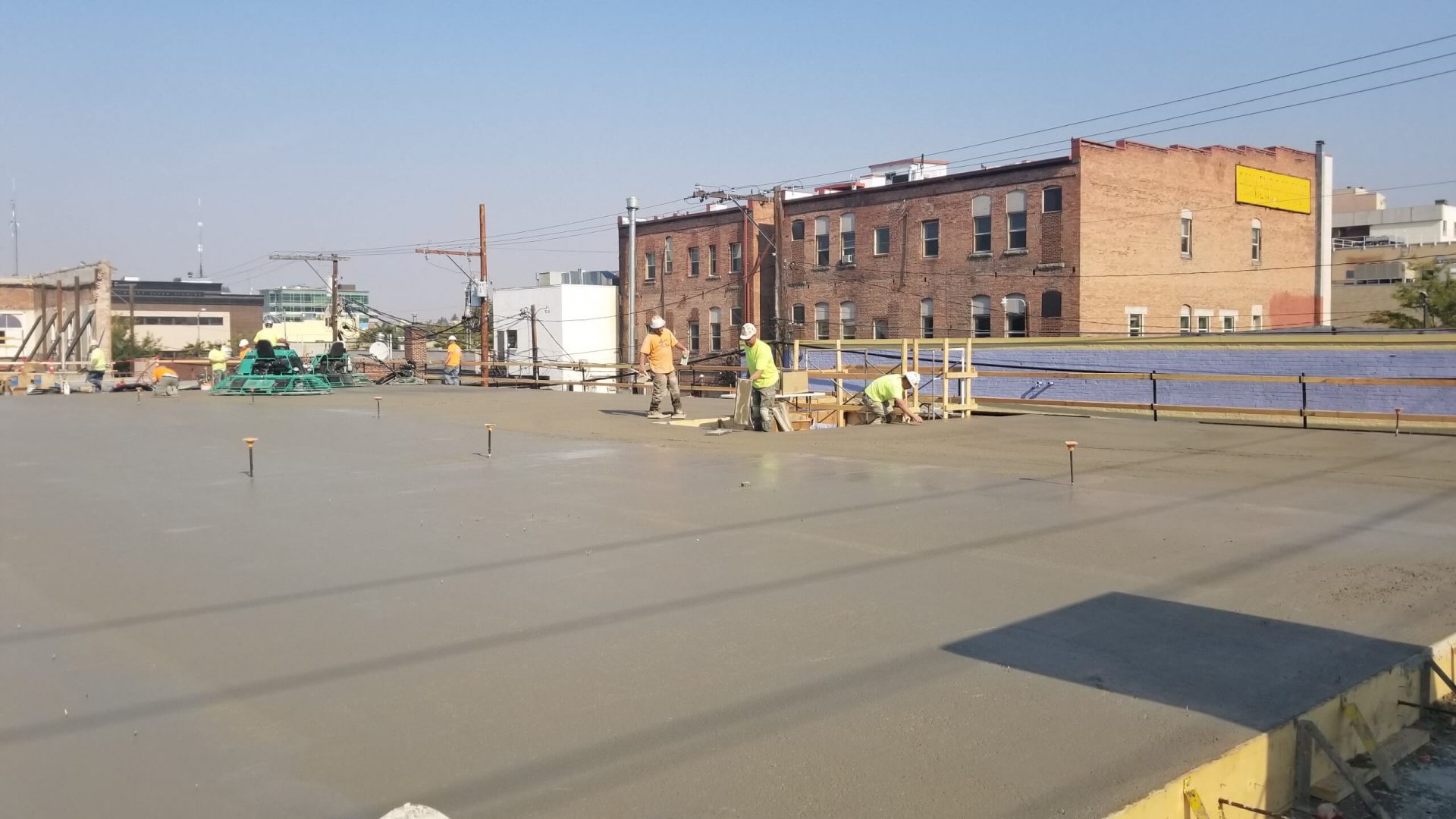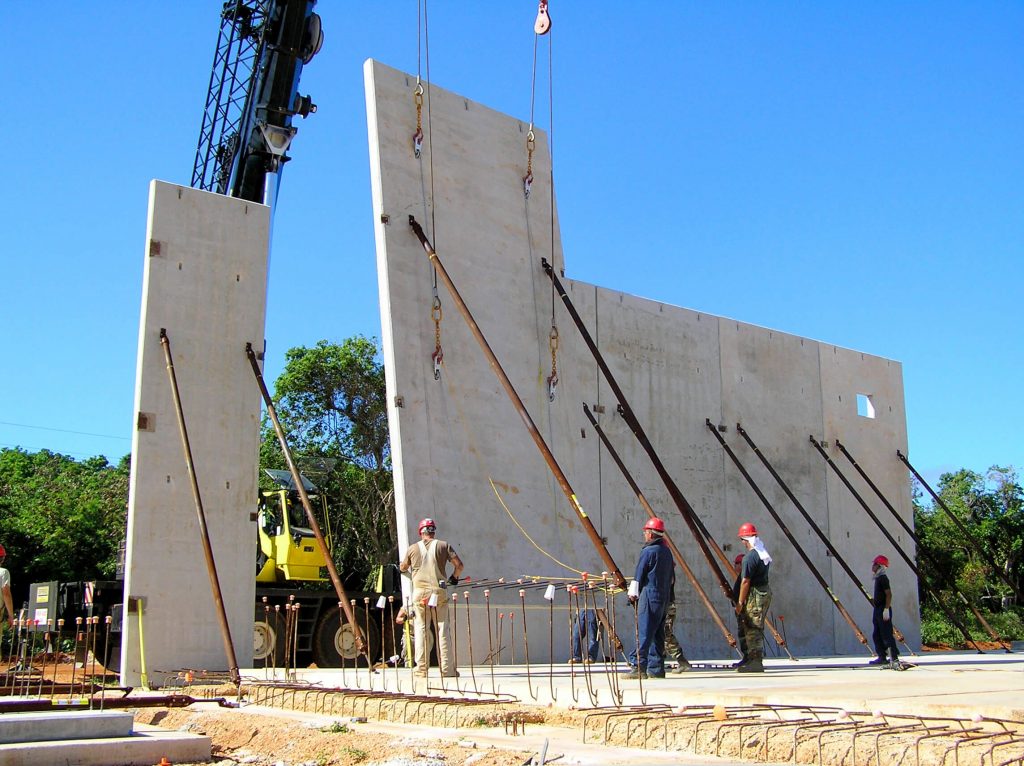Understanding Compressive Strength vs. Tensile Strength
Ensuring your concrete is durable and stable isn’t just about achieving an acceptable level of compressive strength, which is the concrete’s ability to withstand loads that crush or squeeze it. You also need to consider its tensile strength, and the concrete’s ability to withstand loads that will likely elongate or stretch it. Since concrete naturally has a relatively high compressive strength and low tensile strength, contractors will often apply reinforcement techniques to increase the latter.


Download the full Checklist now and experience smoother, stress-free cold-weather concreting like never before.
Concrete structures such as office buildings, parking lots, bridges, and sports stadiums require high tensile strength because, without them, the concrete will struggle under the weight it has to carry due to a lack of flexibility, leading to cracking and weakening of the structure. For example, if a parking lot’s beams are subjected to heavy loads of cars without any reinforcement, it’s likely that the bottoms of the beams will expand. Even slight elongation in the concrete can cause cracking.
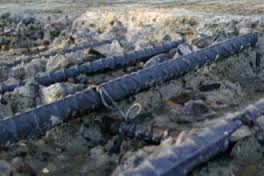
To prevent this from happening, steel reinforcing bars, or rebar, are embedded into the concrete to increase the concrete’s flexibility, Unfortunately, rebar only provides passive reinforcement, which means it will only bear loads or force once the concrete has already cracked.
Post-tensioned concrete comes into play as active reinforcement, unlike steel reinforcing bars.
What Is Post-Tensioning and How Is it Implemented in a Concrete Structure?
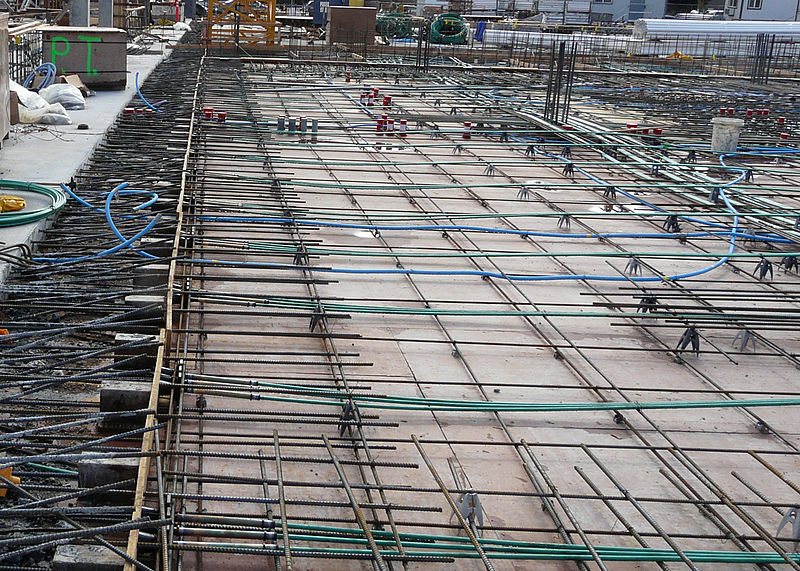
Post-tensioning was first patented by P.H. Jackson in the 1800s in San Francisco and refined to its contemporary form in the 1920s by Eugene Freyssinet in France. This technique gained popularity in North America in the 1960s and has been rapidly increasing in popularity over the past 30 years.
The post-tensioning process works as follows:
First, you must install steel tendons into the formwork and position them before the concrete is placed. Steel tendons are prestressing steel cables inside plastic protective ducts or sleeves, each one with anchors on each end to transmit the forces into the structure. Because of the sleeves, the tendons are not placed in direct contact with the concrete.
Then, once the concrete has gained the required level of strength but before the service loads are applied, you’ll pull the cables tight (aka tensioning) by using a hydraulic jack and anchored against the outer edges of the concrete. Think of them as behaving like rubber bands.
What’s the benefit of tensioning or pulling the tendon-filled sleeves after the concrete is placed? Doing so allows them to be readily formed into the desired shape such as incorporating vertical and/or horizontal curvature. Once the tendons are tensioned, it creates a force that counteracts the weight that is subsequently applied to the hardened concrete structure, preventing cracking and increasing its service life.
Steel tendons used for post-tensioning typically have a tensile strength of 270,000 pounds per square inch (psi), are about 1/2 inch in diameter, and are stressed to a force of 33,000 pounds. In contrast, a typical piece of rebar will yield about 60,000 psi.
Monitor your concrete strength during post-tensioning with maturity!
Measuring Concrete Strength Before Post-tensioning
It’s critical to gather precise temperature and strength measurements of your in-situ concrete to determine when the steel tendons should be tensioned. If your measurements are inaccurate, you could tension them too early, potentially causing the concrete to crack.
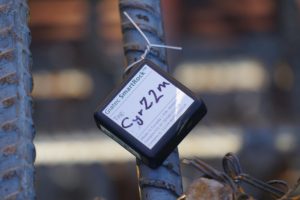
The high-tech and rugged SmartRockTM wireless sensors provide accurate real-time calculations based on the maturity method. More specifically, it allows you to collect the concrete’s temperature history, which is used to calculate the maturity index of concrete, enabling you to predict its early-age compressive strength. Keep in mind that the standard level of strength for post-tensioning is 75% and in some cases, your concrete can reach this level of strength sooner than expected. By employing the maturity method, you’ll be able to closely monitor when your concrete reaches the necessary level of strength so you can move forward post-tensioning as soon as possible.
Furthermore, as a non-destructive method, SmartRock requires its sensors to be embedded into the concrete and eliminates the need for time-consuming and costly cylinder break tests.
SmartHubTM is a remote monitoring system that allows you to access your SmartRock data at anytime, from anywhere. These user-friendly sensors are easily installed in the concrete formwork (on the rebar) before pouring to monitor your concrete’s in-situ temperature and strength in real-time. The Hub automatically collects this data recorded by the SmartRock sensors and uploads it to the Giatec 360TM cloud dashboard via LTE where it is synced to your team’s mobile devices in the SmartRock app. The Giatec 360 alert system sends smart notifications to let you know when your concrete reaches specific thresholds.
**Editor’s Note: This post was originally published on August 12, 2020 and has been updated for accuracy and comprehensiveness.
